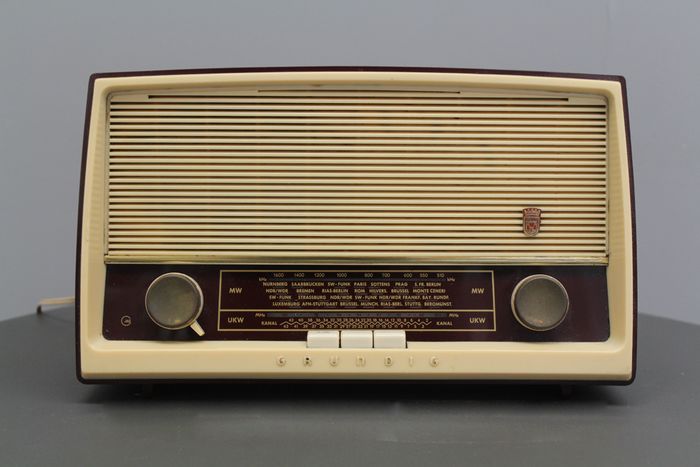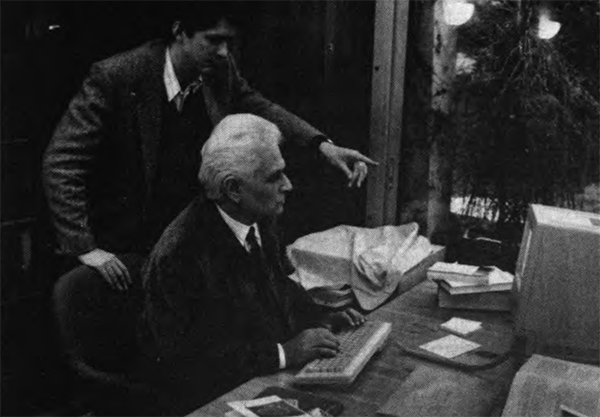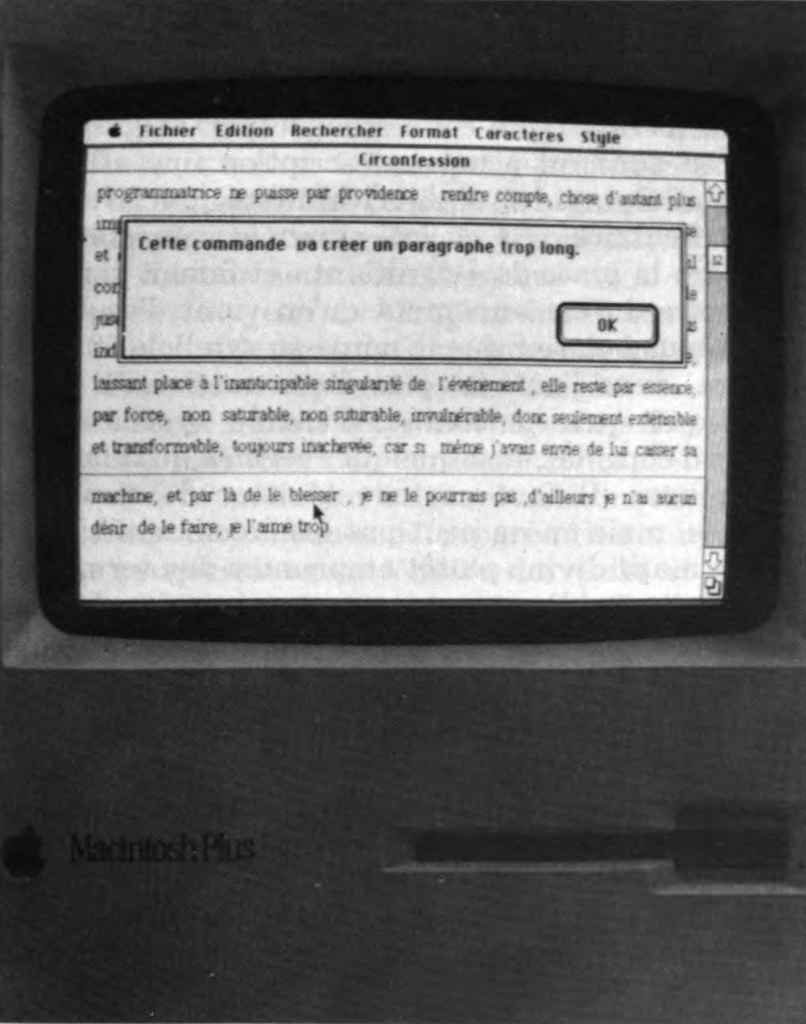I've been finishing an essay for a friend about Friedrich Kittler and the "media a priori" of philosophy. It's an idea I have had on the back burner for several years. Ever since Wolfgang Ernst told me the story of Heidegger's radio--a burgundy Grundig 88, which he belatedly allowed into his otherwise techno-primitive hillside cabin during the Cuban Missile Crisis on fears of nuclear catastrophe--I've thought a lot about the technologies beneath and behind philosophy. I'm thinking of Freud's mystic writing-pad, or Nietzsche's typewriter (which Kittler devoted a whole chapter to in Discourse Networks). But that's just the start... Why not also Sarah Kofman's camera obscura, Du Bois's data vis, Derrida's Macintosh, Deleuze's VCR...a parade of philosophy's media a priori.
Okay sorry. "Deleuze's VCR" is a fabrication. I have long suspected that the videocassette recorder was the hidden secret behind the reams of film references in Deleuze's monumental two-volume work on cinema. For how else could the elderly philosopher, already in poor health, have watched and referenced so many films, often multiple per page, if not from the privacy of his own home? Unfortunately, like all good theories, this one has no evidence to support it. To my surprise, while Deleuze most certainly was a fan of the cinémathèque, he appears to have boned up on his film knowledge from books rather than screens! As Jason LaRiviere reminded me, Deleuze would receive reading assignments about movies from his colleague Michel Ciment in the Place de Clichy (as reported by François Dosse).

Derrida's Macintosh is no embellishment, however. He was nutty for the contraption. Derrida learned to type in 1956 and got his first computer around 1986. Although a late adopter ("I resisted for a long time") Derrida grew to love his computer. "I can't do without it any more now, this little Mac, especially when I'm working at home," he confessed. "I can't even remember or understand how I was able to get on before without it" (Paper Machine, 22, 20).
On Derrida and computers, the first place to look is Béatrice and Louis Seguin's interview with Derrida first published in La Quinzaine Littéraire (August 1996) and later included as chapter three, "The Word Processor," in Derrida's book Paper Machine. This short text is often read in conjunction with Derrida's Archive Fever, where Derrida felt moved to acknowledge "the little portable Macintosh on which I have begun to write" (25). Geoffrey Bennington's "Derridabase" project is another potential source even if by his own admission it failed to adequately combine Derrida with computerization. "The guiding idea of the exposition comes from computers: [I] would have liked to systematize [Derrida's] thought to the point of turning it into an interactive program," Bennington admitted at the outset. Yet given how Derrida's thought "must remain essentially open, this undertaking was doomed to failure from the start" (1). Also recommended is Peter Krapp's relatively early essay "Derrida Online."

Derrida used a Macintosh Plus, a Macintosh Classic, and a Macintosh LC475. Reports also indicate that he owned an Apple PowerBook, an iMac, and possibly other Apple computers. "Even the computer belonging to the 'great writer' or 'great thinker' will be fetishized, like Nietzsche's typewriter," Derrida noted with some dismay (Paper Machine, 29). Although Derrida must have known that the "great thinker" so named would eventually be himself! And just as he predicted, three of Derrida's beloved Macintosh computers were posthumously deposited in his literary archive at IMEC (Institut Mémoires de l'édition contemporaine) in Normandy, France. These machines have been painstakingly investigated in the years after his death by forensic engineers intent on reconstructing the discontinuous rhythms of cut-and-paste that might still linger within the discontinuous byte structure of Derrida's hard drives. The efforts of Aurèle Crasson, who leads the research group "Hexadecimal Derrida" (what a name!), have been particularly instructive. While it sounds like science fiction, by examining the jump points in Derrida's disk images Crasson's team has been able to determine when and where Derrida used the cut-and-paste feature as he was drafting his texts, thereby re-creating the realtime flow of Derrida's authorship from years in the past.
I was amused to learn that Derrida adamantly avoided using Microsoft Word, instead preferring MacWrite, the application that came bundled for free with his Macintosh. Crasson and her team note "the almost complete absence of digital files written with Word" in Derrida's digital archive, observing that "Derrida remained faithful to MacWrite throughout the years he wrote on a computer" ("Le « siliscrit » de Jacques Derrida," 191, 193). On this point, Matthew Kirschenbaum reminds us that the original Apple Macintosh "had relatively little influence on literary word processing, at least at first--the program that shipped with it, MacWrite, was considered weak (it could only handle documents of up to around eight pages), and it was several years before it would have seemed an attractive choice for most authors" (Track Changes, xiv). Although none of that seemed to bother Derrida.
Derrida was indeed obsessed with the cut-and-paste feature. The Macintosh allowed him to cut and reassemble his text with seemingly infinite variability. Would this new machine more fully realize what Derrida had found in other forms of textuality, like the trace and the copy, or the operations of proliferation and dissemination, if not also the compulsion to repeat, what he himself titled mal d'archive or "archive fever"?
Derrida also liked to play around in the desktop. In a folder containing documents for his seminar on "the secret," Derrida assembled his notes in eleven files, each with an ever expanding filename:

As always with Derrida, the puns and allusions proliferate...around the French words for "secret" (secret), "secretary" (secrétaire), and "secretariat" (secrétariat).. while the letters "sec" hearken back to Derrida's 1971 essay "Signature Event Context." And as feminist theorists have pointed out, "secretary" and "computer" have long been intertwined.
Derrida had a neurotic relationship to duplication, filling his disks with scores of backups. With the utmost professional delicacy, Crasson's team refers to "the anarchic proliferation of files" and "the dissemination of multiple redundant copies on all the media formats" present in Derrida's digital archive ("Le « siliscrit » de Jacques Derrida," 196, 191). Translation: Derrida was a digital hoarder.
Derrida was also concerned about data loss for practical reasons after a burglar robbed his home making off with a laptop filled with files. "During the past two years, I have twice been burgled, the second time in my presence, to put it like that, when I was myself at home. Only two things were stolen, and it was well spotted, admirably targeted: my laptop the first time, my portefeuille the second time" (Paper Machine, 189). Still, we know that Derrida was drawn to copying for philosophical reasons as well. These many files, these many backups, reveal in Derrida a kind of digital death drive--the hard drive acting as the substrate of the death drive--where the compulsion to repeat finds its surrogate in the operations of "Save" and "Save As..."

No deconstruction without computers. Or as Kittler reported in an interview: "I was very pleased that Jacques Derrida, during a recent visit to the university in Siegen, actually uttered the sentence (after some questioning): 'If there had been no computer, deconstruction could never have happened.'"
And Kittler knew something about hardware and software; even as he penned his notorious essay "There Is No Software," he was also writing software programs himself in C as well as assembly code for the Intel 8088. Here I will simply agree with Paul Feigelfeld. "Kittler is a liar. Kittler is a liar like Odysseus. Of course there is such a thing as software. Kittler himself wrote quite a bit of it."
No deconstruction without computers? Does that make the computer the media a priori of deconstruction? (And couldn't a better case be made not for deconstruction but for Lacanian psychoanalysis, based on evidence furnished in Lacan's Seminar 2?) For Derrida, the computer tapped into the macrocosm of psychic drives by way of speech and subjectivity. The computer was, simply put, the Big Other. It frequently had a disciplinary role, re-enforcing Derrida's own superego, telling him what to do, and compelling him to act in certain ways. A harmless and slightly amusing example was the "long paragraph error" that Derrida sometimes experienced, and which has been preserved in a photograph of Derrida's desktop taken by Suzanne Doppelt.
Cette commande va créer un paragraphe trop long / [OK].
This command will make your paragraph too long. Derrida recounted the experience of receiving this popup error in Paper Machine: "when I got to the end of a paragraph of such and such a length, roughly twenty-five lines, [the software] told me: 'The paragraph is going to be too long; you should press the Return button.' Like an order coming from I know not whom, from the depths of what time or what abyss, this slightly threatening warning would appear on the screen" (22).
What an abyss, this machine! When Kittler argued that "there is no software" he knew there was still real hardware supporting it. For Derrida-the-user there is no software either, yet nothing to back it up, only interfaces in front and vast depths beneath.
